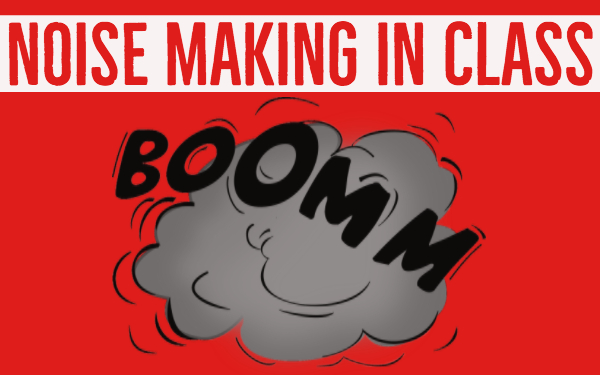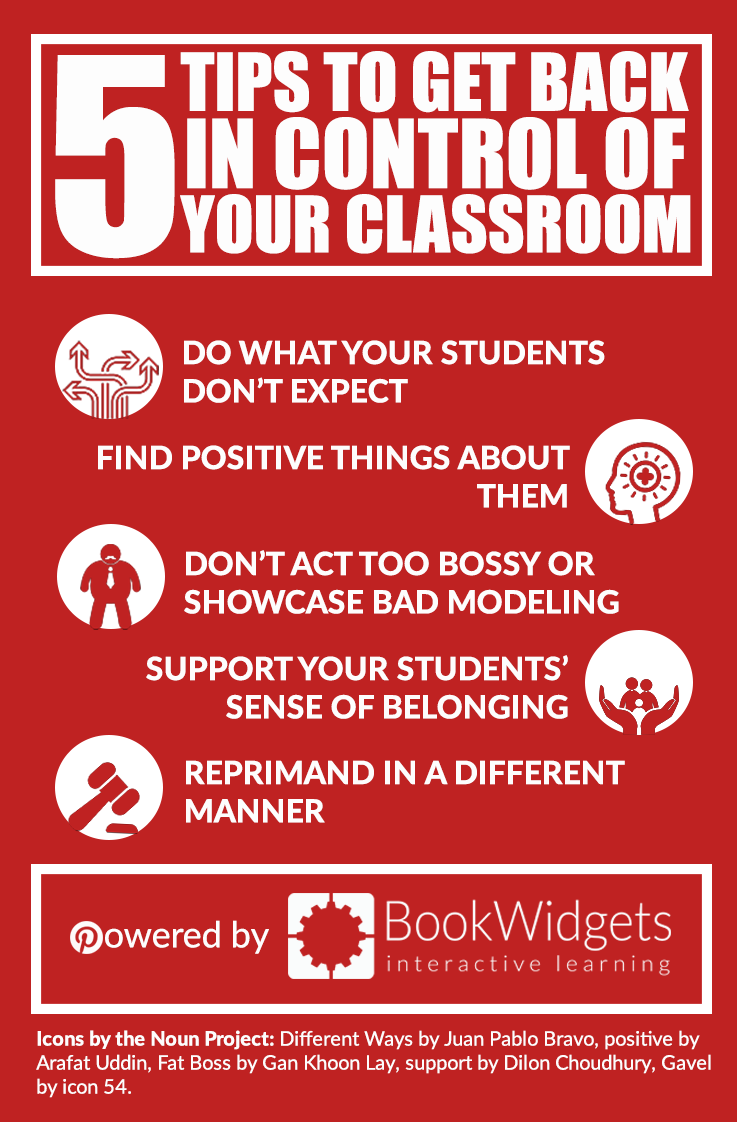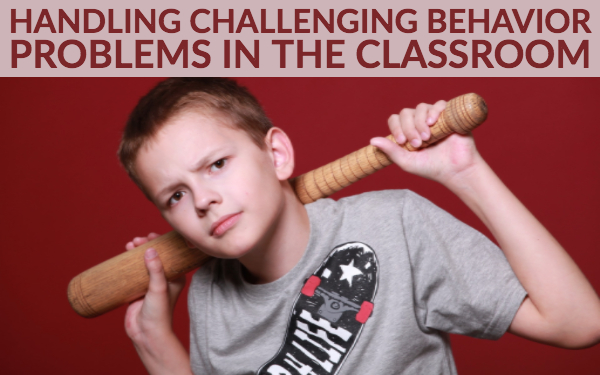Handling challenging behavior problems in the classroom
 Jake Lester —
Jake Lester —
As a teacher, one of the most common things that you’ll come across in your career is dealing with challenging students. In case the behavioral problems that you are required to handle frustrate you, it would do you a lot of good to take some comfort in knowing that other teachers around the globe face the same challenges. The need to handle behavior issues is one of the additional packages that are tied to the teaching profession.
It is of importance for you to note that even the most experienced teachers have their fair share of managing difficult students. From power disputes and struggles among students to too many talkative students, the list of stubborn behaviors that you will have to deal with until you retire is quite lengthy. However, with a framework of how you can tackle all these issues, it is possible for you to have the upper hand over your students and hence assist you in avoiding frustrations in your job.
Luckily enough for you, other than acquiring help from educational technology tools such as flipgrid, Classdojo and insertlearning, below is such in-depth coverage of some of the best ways that you can handle the most common and challenging behavior problems in the classroom.
How to Handle 5 Challenging Behavior Types
1. Noise Making in Class

With about 3.8 million kids having attended public school kindergartens in the US, it is quite tricky to lack some students that have a tendency of talking nonstop and in the process distracting their fellow students from concentrating on their studies. These “chatterboxes” are the true definition of a nuisance to you as a teacher and to their classmates hence requiring the best methods to control this annoying behavior.
The best way to handle such students is by giving them positive instructions when trying to correct their endless noise making, while concurrently doing your best to avoid adverse instructions. Instead of using the typical “no talking” strategy, you should direct your instructions to these specific students by instructing them to “remain silent”. You should then follow up your request with a “thank you” for you to indicate that you acknowledge your request’s been adhered to.
In case the talking happens while you’re in the middle of teaching or addressing the class, the best solution is to stop talking. By doing so, you will have brought to life a reminder to your students that you are in charge and should be listening to you rather than talking among themselves.
In addition, there are some edtech apps that can help to indicate the noise in the classroom. Take Too Noisy for example. It shows them how loud the classroom is at that exact moment. Ask you students to stay in the “green” zone. The app visualizes the noise, so it’s easier for students to really understand the problem.
2. Power Struggle

Some students intentionally refrain from concentrating on their classwork or even completing it to draw their teachers into a form of power struggle. You should always be keen to identify such students and never fall into their trap at any given time.
The most prudent way to handle such students is by giving them choices that have consequences attached to them. Ensure that they are aware that if they do not finish their classwork within a given time frame, they are bound to miss out on the class’s free time or any other consequences that you find suitable to such a situation. Classcraft can help you with that in a playful way, where students' fantasy comes to life.
This helps to put their behavior’s responsibility on them while also assisting in teaching them the best way to make choices in life. In addition to the above, you should learn always to show your students appreciation when you give them a number of options, and they make the right choice. A simple “thank you,” or even a smile will go a long way in reinforcing this positive behavior. You could also think about setting up a reward system. But be careful with that. We want students to behave good on their own, and not because they get someting out of it.
3. Arguments Galore

Students that have cultivated a culture of challenging everything that their teachers say or do can easily distract the entire class from the teachers' lessons by deviating focus on secondary and meaningless issues. It’s quite hard for you to restrain yourself from reprimanding such defiant students, but it is crucial for you to note that adopting a hostile type of attitude or even getting defensive will not solve such an issue. Instead, you should purpose to remain civil and assertive while focusing on the problem at hand.
Instances such as this that occur recurrently will require you to hold an “after class” meeting with the responsible student(s). In this discussion, you should explain to the student(s) the manner in which the behavior is not acceptable and how it will bring about a problematic relationship between you and him/her as well as how it interferes with the learning time of the entire class.
Handling dificult and confronting conversations need some preparation. Here’s the ultimate conversation guide that helps you tackle 6 different conversations with students or parents.
4. Broading

Sulky behavior is also one of the biggest distractions for teachers in a classroom. This is a behavior that you should nip in the bud as soon as you can before it develops into a much more completed syndrome. Once you’ve observed such action with any of your students, you must call for a private discussion with him/her. Make sure that you’ve demonstrated the mannerisms and brooding behavior to the student so that you can explain this behavior vividly to him/her. The reason behind your need to do this is that in most instances, brooding students have no idea of how their behavior is regarded as being socially unacceptable or being rude.
5. Overdependence

Students that tend to always request for assistance with every opportunity that they get may be doing this out of a desire for attention or could only have a genuine inability to accomplish these tasks on their own.
First, assess the main reason behind such a clingy habit so that you can address it. You can try and ignore the student’s persistent calls to look at his/her work for quite a while.
If he/she waits for you patiently, approach and reward him/her by taking a look at the work with more enthusiasm than before. Another strategy that you can use is having students to first ask their peers before approaching you for clarification. Lets students reflect on their work first before asking questions. Here are some creative self assesment ideas that might help.
5 Tips To Get Back in Control of Your Classroom
1. Do What Your Students Don’t Expect
 Whenever a student or child misbehaves, there is a high chance that he/she will expect that the teacher will respond to their actions. However, as a teacher, you can choose to react differently and instead do something unexpected whenever such a scenario arises. For example, when a teacher sees a child playing with dangerous things such as matches or in areas that are outside the allowed boundaries, there is a response that these students expect. The most common reactions that are expected include the teacher saying, “Stop!” or “Can you get back within the boundaries immediately!”
Whenever a student or child misbehaves, there is a high chance that he/she will expect that the teacher will respond to their actions. However, as a teacher, you can choose to react differently and instead do something unexpected whenever such a scenario arises. For example, when a teacher sees a child playing with dangerous things such as matches or in areas that are outside the allowed boundaries, there is a response that these students expect. The most common reactions that are expected include the teacher saying, “Stop!” or “Can you get back within the boundaries immediately!”
However, you can choose to be different and uniquely handle things. You could try and tell them something that will catch them off guard such as, “You children seem too smart to be playing in such a restricted place,” This kind of communication will surprise students and children to the extent of prompting them to change their unwanted behaviors.
2. Find Positive Things about Them
 For the children or students that misbehave on a regular basis, it can become quite hard for you to find positive remarks about them. However, as a teacher, you are required to strive to rectify this because the more students receive positive attention; the less likely they become to draw attention negatively.
For the children or students that misbehave on a regular basis, it can become quite hard for you to find positive remarks about them. However, as a teacher, you are required to strive to rectify this because the more students receive positive attention; the less likely they become to draw attention negatively.
You can step up and go out of your way to look for positive things to say concerning these chronic naughty students. Often, you find that these children lack belief in their abilities and require teachers to assist them in seeing that they have the ability to become constructive.
3. Don’t Act too Bossy or Showcase Bad Modeling
 A good number of times, acting too bossy leads to students crafting thoughts of how they will seek revenge on you. As a teacher, you can take your time and put yourself in their shoes and ask yourself whether you would like being bossed around and have little space to breathe. Likewise, children do not enjoy being bossed either!
A good number of times, acting too bossy leads to students crafting thoughts of how they will seek revenge on you. As a teacher, you can take your time and put yourself in their shoes and ask yourself whether you would like being bossed around and have little space to breathe. Likewise, children do not enjoy being bossed either!
You should always strive to express a strong passion and desire to have significant relationships with your students or children. This will assist you greatly in curbing the growth of possible negative feelings such as loath and revenge from your students, thus making your teaching process much more comfortable.
4. Support Your Students' Sense of Belonging
 Whenever children and students lack the sense of belonging in a classroom, the immediate course of action is usually to act out. The reason behind this is because by doing so, they are subconsciously attempting to justify the feelings of being locked out of the class' social circle.
Whenever children and students lack the sense of belonging in a classroom, the immediate course of action is usually to act out. The reason behind this is because by doing so, they are subconsciously attempting to justify the feelings of being locked out of the class' social circle.
In such a scenario, you should see to it that you put yourself in their shoes and uplift the affected students' sense of belonging. To get this done, praise the efforts of these students to work in class even in simple tasks or in their social life when they get along with others.
You could also praise the students' attempts to adhere to the set routines or follow the given rules. Also, you may find success by using terms such as “we” in the process of describing a behavior you would prefer. A good example of this is by saying, “We should always be kind when playing with our friends.”
5. Reprimand in a Different Manner
 Whenever you seek to punish or reprimand a student, you can begin by reinforcing positive behavior through saying things like, “You’ve been doing so well lately. In fact, your behavior has been very impressive. Why did you decide to get involved in such a bad habit today?” By doing so, you will have opened a gateway that will allow you to deal much better with the problem at hand head-on.
Whenever you seek to punish or reprimand a student, you can begin by reinforcing positive behavior through saying things like, “You’ve been doing so well lately. In fact, your behavior has been very impressive. Why did you decide to get involved in such a bad habit today?” By doing so, you will have opened a gateway that will allow you to deal much better with the problem at hand head-on.
After you’re done reprimanding, you can wind up on a note such as, “I am sure that this mistake will not happen again due to the great student you have been until this moment. My faith in you is great.” You can use any other technique that you think will work out great for you, but ensure that you practice the element of acknowledging the child`s positive behaviors.
Be aware of the many punishment mistakes that are made too often. Take a look at the punishment tips in that post as well.
Conclusion
The teaching profession is excellent in a vast array of ways with the highlight of it all being the power you are given to shape the lives of the students entrusted to you.
However, it is important to note that it is not always a walk in the park due to the various challenges that you are bound to face especially when dealing with children.
As much as these problems could be overwhelming, you should know that there is always a way to solve them.

Author bio
Jake Lester is a real essay writer that is fond of writing about various spheres of life. The most recurring themes he covers are education, writing and marketing. He has his own writing style and this is why he is appreciated by readers. You may look through Facebook, Twitter & Google+.


